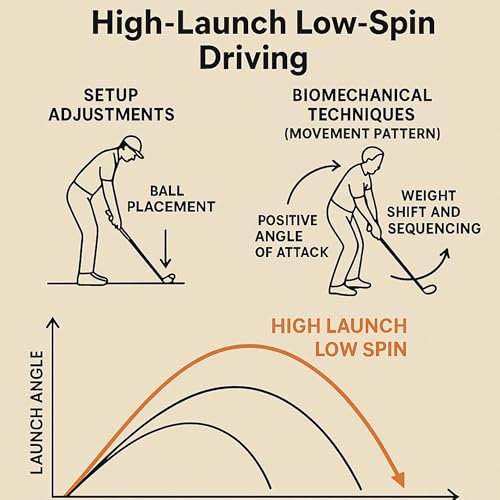The Puttalyze Aiming System is a structured, five-step method designed to make putting precise, consistent, and scientifically measurable. It blends biomechanics, visual psychology, and physics into one repeatable process that removes guesswork from green reading and alignment.
1. Reading the Green – Visual Calibration
Every putt begins with an objective slope assessment. Standing directly behind the ball aligns the golfer with the fall line—the direction water would naturally flow. This position eliminates visual distortion and allows an accurate read of the slope and break. The fall line becomes the foundation for every aiming and speed decision that follows.
2. The 25 cm Aim Point – Visual Precision
The Puttalyze System uses a fixed intermediate target exactly 25 centimeters in front of the ball. This point sits at the edge of the binocular sharp-vision zone, allowing both the ball and aim point to remain visible with maximum clarity. Placing the target further away falls outside this sharp zone, reducing reliability. By anchoring aim within this natural visual boundary, players create a repeatable and biologically optimized aiming reference.
3. Monocular Aiming – Eliminating Parallax Error
Once the 25 cm point is chosen, Puttalyze introduces a unique “V” visual cue. The player closes one eye—typically the left for right-handed golfers—keeping the head level to form a small “V” between nose and eyebrow. This geometry aligns the dominant eye directly with the aim point, producing a single visual line free of parallax error. The “V” acts as an internal sight, confirming that the eyes, body, and putter are all aimed in the same direction.
4. Putter Face Alignment – Mechanical Precision
Physics dictates that the putter face controls 92% of a ball’s starting direction. Therefore, Puttalyze requires the face to be set exactly 90° to the line between the ball and the 25 cm Aim Point. Even a 0.5° deviation can cause a miss from distance. Consistent alignment—such as keeping the leading edge one finger-width behind the ball—creates mechanical repeatability. This step ensures that visual alignment and mechanical execution are perfectly synchronized.
5. Separating Direction and Speed – The Distance Point
One of Puttalyze’s most innovative elements is distinguishing direction from speed. The Aim Point governs direction; the Distance Point defines how far the ball should roll if it misses. Uphill putts require the Distance Point farther beyond the hole, while flat putts usually stop 30 cm past. Training both functions separately refines touch and consistency. The goal: aim toward the Aim Point, but strike with the energy to reach the Distance Point.
The Role of the Fall Line
The fall line acts like the “equator” of the slope—gravity’s purest influence on the ball’s movement. Every read, Aim Point, and Distance Point must reference this natural line. Practicing along the fall line calibrates both visual and motor systems to real-world green behavior, making it an essential foundation for consistent performance.
The Puttalyze App – Science in Motion
The accompanying Puttalyze App brings these principles to life by simulating the exact trajectory of a putt. It calculates slope, green speed, aim angle, and roll distance, then visually displays both Aim and Distance Points. Through real-time feedback, golfers can learn how physics, vision, and motion interact—transforming instinct into measurable control.
Summary
The Puttalyze Aiming System transforms putting into a neuroscientific and biomechanical process rather than an act of feel or guesswork. By training the eyes, body, and putter face to work in perfect harmony, it delivers a repeatable formula:
See clearly → Align precisely → Strike accurately → Control speed.
Every putt becomes a data-driven act of precision—where vision science meets green reading, and instinct evolves into measurable mastery.
 12 分
12 分 13 分
13 分 15 分
15 分 2025/11/0515 分
2025/11/0515 分 14 分
14 分 11 分
11 分 13 分
13 分 2025/11/0118 分
2025/11/0118 分
